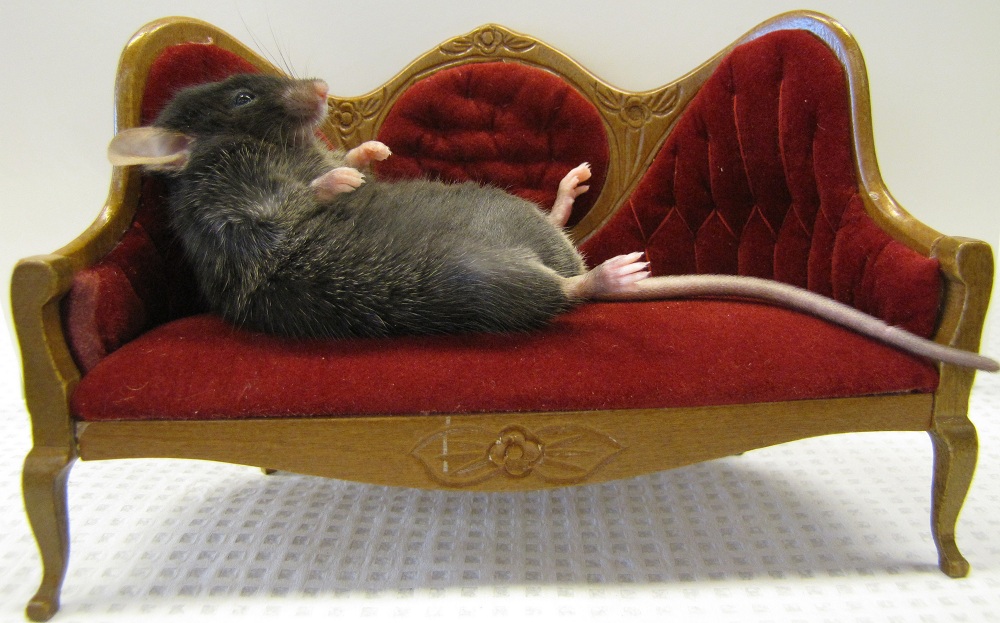From Athlete to Couch Potato: What 2 Missing Genes May Mean

The difference between a couch potato and an Olympic athlete may be all in the genes. Researchers have discovered that disabling two genes in the muscles of mice severely limits their activity — specifically, their ability to run.
The findings may help to explain why some people have trouble getting off the couch, and why the longer you stay sedentary, the harder it becomes to get moving, the researchers say. [7 Common Exercise Errors, And How to Fix Them]
Of course, though mice are good models for much of human biology, the results need to be replicated in humans to see how they carry over.
Manipulated mice
The genes are associated with an important protein, called AMP-activated protein kinase (AMPK), which is involved in many different actions in our cells, and is turned on during exercise.
The researchers turned off two genes that make up two components of the AMPK complex in the mice's skeletal muscles (the muscles we can control, such as those that move our arms and legs). These genes enable the muscles to make energy from sugars. If this process is interfered with, the muscles aren't able to function as well. The researchers could tell the difference between the genetically engineered mice and their normal littermates immediately, even though the engineered mice were perfectly healthy.
"The mice looked identical to their brothers or sisters, but within seconds we knew which ones had the genes and which one didn't," study researcher Gregory Steinberg, of McMaster University, said in a statement.
Sign up for the Live Science daily newsletter now
Get the world’s most fascinating discoveries delivered straight to your inbox.
"Mice love to run," Steinberg said. "While the normal mice could run for miles, those without the genes in their muscle could only run the same distance as down the hall and back. It was remarkable."
When the researchers took a closer look at the rodents' muscles, they saw that mice with a defective AMPK in their muscles had much lower levels of the cell's energy-making machinery called mitochondria. This loss impairs the muscle cells' ability to use sugars during exercise, the easiest, quickest and most efficient source of energy available to the muscles.
Mischievous mitochondria
Previous research has noted that increased exercise causes muscles to have a greater number of mitochondria. Because AMPK is normally activated during these exercise bouts, and because the mutant mice with defective AMPK have fewer mitochondria, the researchers hypothesize that the two — the AMPK expression and number of mitochondria — are related.
"When you exercise, you get more mitochondria growing in your muscle. If you don't exercise, the number of mitochondria goes down. By removing these genes [that control AMPK], we identified the key regulator of the mitochondria is the enzyme AMPK," Steinberg said.
Steinberg said the findings are important for individuals who find it difficult to exercise, such as the obese, asthmatics and wheelchair users. These groups' inability to exercise may lead to other complications, such as diabetes and heart disease.
The study, he thinks, has a message for couch potatoes. "As we remove activity from our lives due to emerging technology, the base level of fitness in the population is going down and that is reducing the mitochondria in people's muscles. This, in turn, makes it so much harder for people to start exercising."
The study was published today (Sept. 5) in the journal Proceedings of the National Academies of Sciences.
You can follow LiveScience staff writer Jennifer Welsh on Twitter @microbelover. Follow LiveScience for the latest in science news and discoveries on Twitter @livescience and on Facebook.
Jennifer Welsh is a Connecticut-based science writer and editor and a regular contributor to Live Science. She also has several years of bench work in cancer research and anti-viral drug discovery under her belt. She has previously written for Science News, VerywellHealth, The Scientist, Discover Magazine, WIRED Science, and Business Insider.










